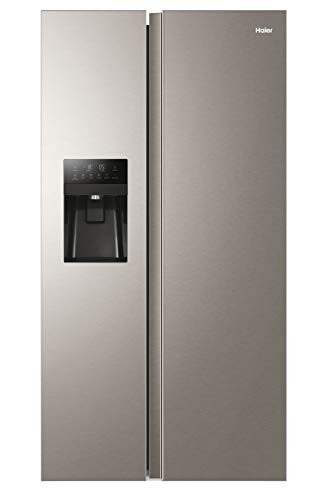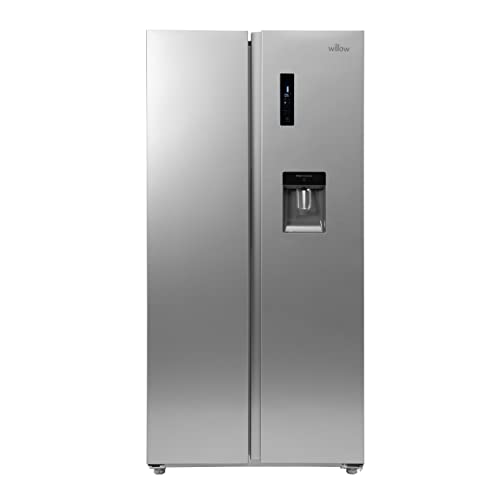5 Killer Quora Answers To Refridgerator UK
페이지 정보
작성자 Celia 작성일 24-12-24 17:29 조회 8 댓글 0본문
 The History of the Refrigerator
The History of the Refrigerator The standard refrigeration of food creates a significant amount of greenhouse gas emissions resulting from leakage of refrigerant as well as electrical power consumption. In 2019 the amount of emissions was 3.2 percent of the total UK annual territorial GHG emissions.
The standard refrigeration of food creates a significant amount of greenhouse gas emissions resulting from leakage of refrigerant as well as electrical power consumption. In 2019 the amount of emissions was 3.2 percent of the total UK annual territorial GHG emissions.Refrigerators weren't commonplace in British homes until the summer of 1959. Prior to this, most households relied on cold slabs that were placed in pantries. These were inefficient at maintaining an even temperature and caused much food spoilage.
The History of Fridges in the UK
Fridges are essential kitchen appliances that let us keep food and drinks fresh for a long time. They also are extremely energy efficient. It's easy, though, to forget that refrigerators were once a luxury product. It wasn't until 1950s when they started to become popular. However, even then, it took a very hot summer to make them become popular in the UK.
Before refrigerators were invented, people used insulated iceboxes to keep their food cool. They would collect blocks of ice from lakes in the winter months, and store them during the warmer seasons. However, these ice containers weren't ideal. They were heavy and needed to be carried by an "ice man". The first refrigerators with electric technology came in 1918, but it was a while before they were widespread in homes.
The efficiency of refrigerators in terms of energy use has improved significantly over time. They consume less energy than they did ten years ago. Some refrigerators consume only 4 kW*h per day (equivalent of 170 W continuously). The majority of domestic refrigerators are energy-efficient, with the majority having an A+ rating.
In the 1950s manufacturers began to offer refrigerators that had separate compartments for freezers. They also began to produce models with a chrome finish, which was very popular at the time. Since then, fridges are made available in a variety colours and finishes. Pastel shades, such as pink and turquoise were very popular in the 1960s. Earth tones, like almond and avocado green, were becoming more popular in the 1970s and 1980s. By the 1990s stainless steel was a popular choice.
fridges uk in the 1920s
Before fridges, people used insulated wooden "ice boxes" to keep food and drinks fresh. The ice man would deliver ice blocks to fill them up, and they kept things cool throughout the year. Ice boxes can be found in the well-off kitchens.
In 1918 the first electric refrigerator was introduced. It was atop the existing ice box in a house. They were large, noisy and costly. They were also known as monitor-tops due to their motors on top of the cabinet. William C. Durant bought out the Mellowes refrigerator company in 1918 and set the Guardian Frigidaire company to mass produce refrigerators. Durant was inspired by a design created by Cistercian Monk Marcel Audiffren, and Swiss Engineer Albert Singrun. It was an absorption refrigerator, using sulfur dioxide as a refrigerant.
In the 1920s, these new refrigerators became affordable for many homes. The new refrigerators were able to store more food and drinks and kept them cool for a longer time than the old ice boxes.
Refrigerator advertisements were imaginative engaging, captivating and full of promises of cold drinks and stylish designs. Vintage ads are interesting to read because they provide us a glimpse into the lifestyle of the time.
At the end of the 1920s, electric refrigerators were installed in nearly all homes. Electric utilities aided this trend by offering rebates on their bills to customers who purchased refrigerators. In the Great Depression, these appliances were considered essential to the survival of a home and their demand increased.
Fridges in the 1950s
Fridges became more common in the 1950s. They were still rare in the 1920s. In the late 1960s they were a common sight in most homes (although it is worth noting that you probably wouldn't have seen a fridge in every household during the early days, since this was a high-cost luxury for many).
The first fridges were utilitarian and simple appliances that fit in with kitchen decor. The fridges were usually smaller and sat on legs. They came in a variety of colors (though most were pastels like mint). In the time of this, there were a number of companies manufacturing fridges that included Whirlpool (who had recently emerged as a top brand), Gibson, Hotpoint and Tappan.
These brands were all renowned for their reliable and high-quality refrigerators. They also offered other kinds of appliances in their product line. For example, Crosley was a manufacturer of radios before they moved into refrigerators in the 1940's and were renowned for their compact refrigerators that fitted well in smaller areas.
In the 1950s, refrigerators were more elegant and were advertised to housewives as a status sign. They were designed to match cabinets and walls of the kitchen, and were generally white and had chrome handles.
Then in the '60s refrigerators began to transform into gadget-oriented machines that came with things like separate freezer sections as well as ice cube makers. In addition, manufacturers began to use less expensive materials and were able to offer the fridges at lower prices.
Fridges in the 1960s
Fridges finally became a staple in many households in the 1960s, with a lot of families having two fridges. In the 1960s, the average American cheap fridge freezers uk cost $600 (roughly $7000 in 2024 dollars). At the close of the decade, prices had dropped to just $200.
The refrigerator was a significant advancement at the time. It transformed kitchens and changed the way we stored our food. The fridge also improved the comfort of homes as it helped keep meat and dairy fresher longer, allowing people to buy in bulk and cook meals ahead of time and then store them to be used later.
Early refrigerators used poisonous gases like ammonia, sulfur dioxide and methyl chloride to cool food. This was hazardous for humans as these gases leak out of refrigerators. Several people died from poisoning and it was only in 1929 that a safe method for cooling food, made of carbon dioxide, was developed.
It enabled manufacturers to design safer and more efficient refrigerators that could be used in homes. Some refrigerators had an internal freezer that could be accessed by opening the door of the refrigerator. These refrigerators were known as bi-door and were extremely popular in the 1950s and 1960s.
Refrigerators of the 1960s were more futuristic than those of today, featuring soft curves and a modern look that suggested a future of efficiency and freedom for the home. They were still relatively large, however the boxy style of refrigerators from the 1940s was starting to decline.
Refrigerators Today
Modern fridge freezers for sale freezers are available in a variety of colors, styles and finishes that can be customised to suit your kitchen and personal style. Certain fridge freezer for sale freezers feature smart features that are connected to Wi-Fi. This allows you to quickly customize the settings. Others have an inbuilt camera that allows you to check inside the refrigerator.
French door models are now dominating the market, since consumers want modern looks and features such as water or ice dispensers, flex drawers and in some cases a smart screen. Some are also rated A, B or+ in energy efficiency ratings, following changes to the labelling requirements for refridgerator uk (recommended site) appliances.
We love this Hotpoint model for its sleek design, which features an innovative UVNano technology that auto-sterilizes the fridge to kill bacteria and a pair of salad drawers with adjustable humidity sliders. It's also big with plenty of storage space for jars and bottles and a large utility box in the door of the fridge.
Look for fridges with the green ICE+ feature that uses less energy. You can also save more money by selecting one with an automatic ice maker. This will ensure an unending supply of ice that is ready to be used in the morning.
A fridge that's A or A+ in energy efficiency is one of the most beneficial ways to help the environment. When choosing an appliance it's an ideal idea to include the annual electricity consumption of the fridge into your household budget. It is essential to keep in mind that we can't afford where to buy fridge freezer take electricity for granted. Everyone deserves access to affordable, reliable and abundant electricity to live a healthy and happy life, be comfortable, and help protect the earth.
- 이전글 Case Battle: What's The Only Thing Nobody Is Talking About
- 다음글 You'll Never Guess This Fridge Under Counter's Tricks
댓글목록 0
등록된 댓글이 없습니다.






